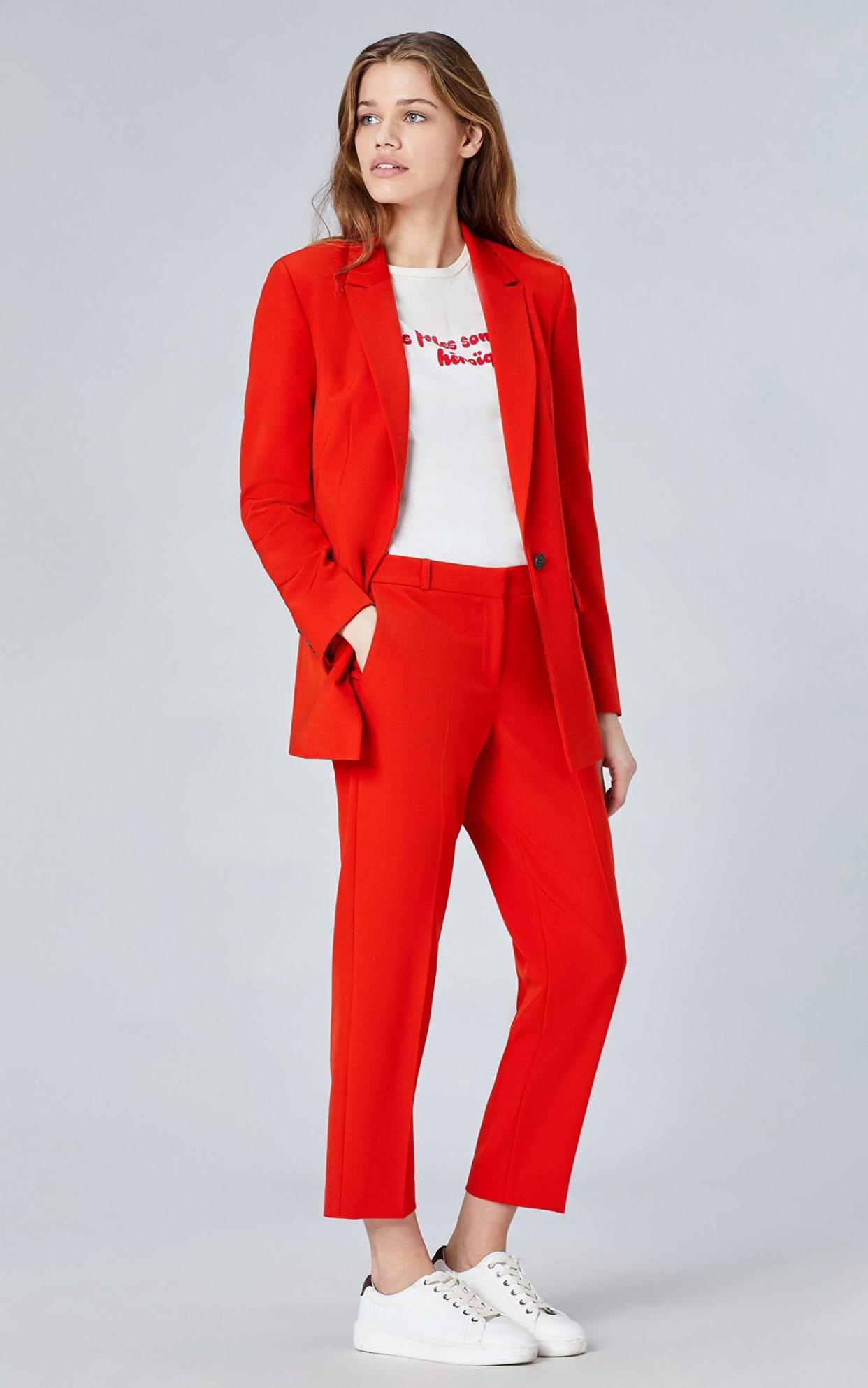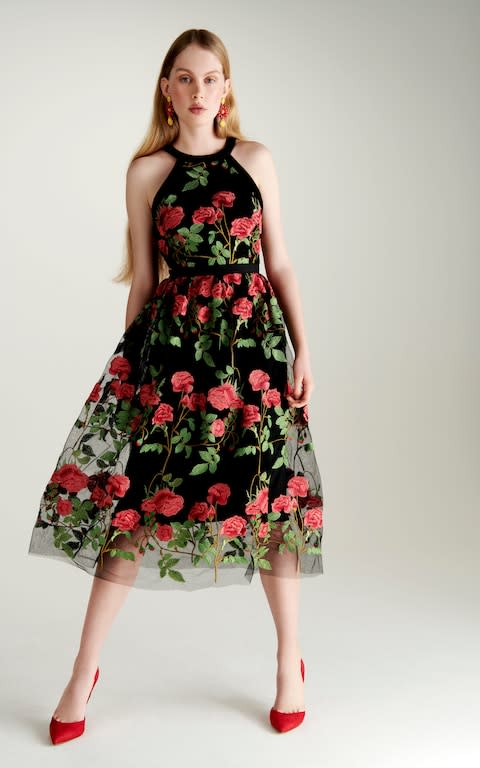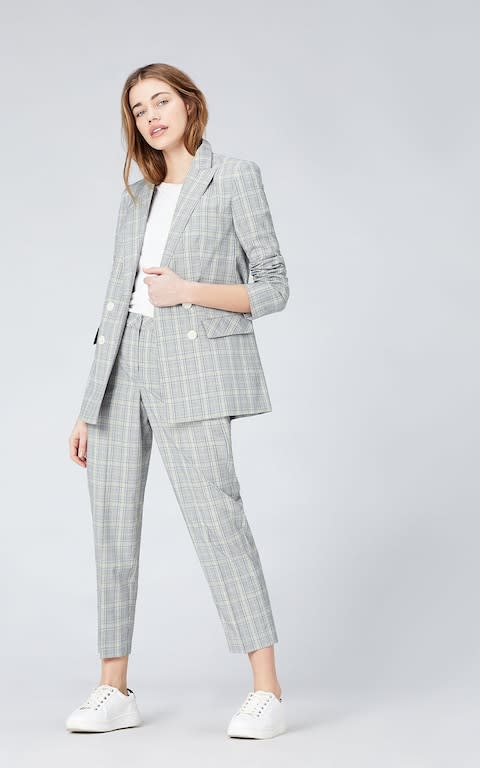It's a one-stop shop - but would you buy your clothes from Amazon?

What was the last thing you bought from Amazon? Toothpaste, a USB cable, an ebook? When the etailer launched its unlimited one day delivery service membership, Amazon Prime, back in 2007, it caused a shift in customer habits: instead of shopping online for non-urgent gifts, electronics and household goods, shoppers began frequenting Amazon as they once had the supermarket or local department store - for every little thing, as and when they needed it, all delivered the next day in a brown corrugated cardboard parcel.
That same corrugated card comes bearing one of Amazon’s latest offerings: fashion. Tomorrow sees the launch of Truth & Fable, an occasionwear-focused brand designed by an in-house team. It comes hot on the heels of newly launched lingerie line Iris & Lilly and everyday fashion label Find. The latter, which launched in September, has proven - perhaps surprisingly - popular with fashion press: the Telegraph’s head of fashion and style Lisa Armstrong owns the £61 trench coat, and their blazers and everyday dresses are strong sellers. Truth & Fable is slightly pricier - you can get a jumpsuit for £60, but the embroidered dresses are priced up at £135 (sizes six to eighteen). At those prices, they’re inviting comparisons with Whistles, Kitri, Rixo, Ganni in the event dressing market, and attempting to undercut Needle & Thread and Self Portrait.
But will it work? While buying a party frock with your loo-roll might be proven practice in supermarkets, customers that come for loo-roll will physically walk past those clothes - the same can’t be said for someone shopping via the Amazon app or online. And at these prices, will the sheer volume of other product on offer put shoppers off?
“I don’t think we’re trying to move away from Amazon,” says Frances Russell, VP of Private Brands at Amazon Fashion, who joined in 2016 from Marks & Spencer “We are Amazon, and we embrace that ability to be able to buy your deodorant with your dress - but obviously we want to make the product look as aspirational and inviting as possible. And you want different cues when you’re buying a dress to what you want when you’re buying toothpaste.”

Embroidered dress, £135, Truth & Fable at Amazon
To that end, the site itself is a potential sticking point. While each brand does have its own specially designed landing page, those infinite grids of product you’d find on the main site are still core to design that’s functional, but definitely not sexy. You can’t touch or try virtually - something Amazon has tried to offset with new video clips of the clothes on models. Fabric has been a priority too - from the perspective of quality and washability. Still, the customer experience is quick and easy rather than ‘special’ - but Amazon isn’t trying to launch the next Net-A-Porter - or at least not yet.
“I think that we are always dissatisfied with how the site looks. You could get a room full of 1000 people - some like certain parts of it, some don’t like others. We’re always looking to improve,” says Russell. “We’re not given any preference on the site, so essentially we have to create the best brands we can. And the customer will tell us if they like them or not.”
This isn’t Amazon’s first attempt to break into the fashion market. Though it had sold clothes before, a drive to become a fashion destination began in earnest in 2012 - and while designer brands were initially reluctant to have their product sold on a marketplace sight, large orders - often for designer’s whole seasonal collections - swung the pendulum in Amazon’s favour. Off-site, the etailer has been steadily working to build a fashion profile - sponsoring fashion weeks in Tokyo and New Delhi, and co-sponsoring the 2012 Met Gala (the highest profile event on the fashion calendar). Jeff Bezos, Amazon’s founder and CEO, once said the brand’s “target market is everyone who wears clothes.”

Trench coat, £61, Find at Amazon; Mom jeans, £35, Find at Amazon
Selling recognisable, trusted brands like LK Bennett, Levis or Adidas online is one thing - persuading customers to buy an unknown label is quite another. Most design houses begin with a very strong idea of the woman they’re designing for. With so broad a customer base, Amazon runs the risk of trying to appeal to every woman - and in doing so, appealing to none.
“We look at what the data’s telling us,” says Russell, who admits to spending hours reading customer reviews online “and we can pivot. It’s so early - we have assumptions and we test them and we change. One thing that’s always remained the same is that if you give people great fit, great product and good value, that’s where you win. And let the customer tell you, rather than trying to predict the future.”
Amazon’s no bells and whistles, tech-first approach is perhaps most easily compared to ASOS, who overtook M&S in terms of market value at the end of last year (£4.89bn compared to £4.88bn). While luxury designer eboutiques like Matches and Net-A-Porter send out orders in smart boxes, ASOS deliveries come in plastic envelopes - as with Amazon’s cardboard, it’s an economy that allows them to keep prices low.

Check blazer, £53, Find at Amazon; and check trousers, £31, Find at Amazon
The lack of physical stores is the other - very large - economy. John Lewis, another one stop shop, is investing in bricks and mortar, having just opened their four storey, 230,000 sq ft store in London’s Westfield - a goliath of a store, second in size only to their Oxford Circus store (320,000sq ft). But elsewhere on the high street, brands are shutting the high-rent stores that hang millstone-like around the necks of their businesses. In January, M&S announced the closure of six UK branches, with another eight in the firing line; New Look’s potential store closures are currently at 60, and Debenhams is reported to be considering closing some stores after weak trading over the festive period.
At the other end of the spectrum through, digital-only brands Kitri (in the fashion corner) and Glossier (beauty) have turned to physical pop-up show spaces to allow customers to touch, feel and try before they buy, and while 95 per cent of MatchesFashion’s sales are digital, they’ve just invested in a new London townhouse - proving that while customers may buy online, physical interaction can be crucial to developing consumer trust. For now, Russell’s focus is digital-only but, “never say never.”
There is still a gap in customer perception between Amazon Fashion and purely fashion brands. The sheer scale of Amazon - and the amount of product they shift - might be a hindrance in establishing a credible fashion brand that women want to wear. But that scale is also their biggest asset: while other stores struggle to get shoppers through the doors, Amazon has a 24/7 virtual stream of them. Whether or not they’re coming for the fashion, remains to be seen.

